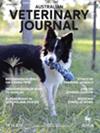Epidemiological insights into the burden of feline upper respiratory tract infections in Queensland RSPCA shelters
Abstract
Introduction
Feline upper respiratory tract infection (FURTI) is a severe problem in animal shelters where there is high turnover of populations and compromised immunity. This retrospective cohort study explores associations of potential animal-based and environmental-based factors with the risk of FURTI, where a previously modelled infection classification is used as the outcome of interest. The study type is a retrospective cohort and the measures of association include Odds Ratios and conditional predictions.
Objectives
To gain epidemiological insights into variation in FURTI using retrospective data from one of Australia's leading animal shelters.
Methods
We stratified FURTI by admission and environmental variables. Predicted infection status, obtained using a machine-learning classifier trained on clinical text (accuracy 0.95 [CI 0.92, 0.97]), was used as the outcome of interest. Prior assumptions were represented by a causal framework or a direct acyclic graph (DAG), which informed creation of multiple Bernoulli models with an observational and prior component.
Results
We analysed 43,431 feline entries over 8 years. Males were 1.24 (95% CI 1.19 to 1.31) times more likely than females to be classified as positive, while already desexed animals were only 0.68 (95% CI 0.60 to 0.72) as likely to be classified as positive compared to those not desexed on entry. Cats (>4 months) were twice as likely (95% CI 1.91 to 2.09) as kittens (0–4 months) to be classified positive. Animals entering the shelter as seized by the inspectorate (n = 415) were more likely to be classified positive compared to animals from other sources. Predicted infection probability increased in winter and showed a linear pattern with how full the shelter was.
Conclusion
This study estimates the association between animal and environmental variables of interest and FURTI classification status, thus better interpreting the distribution of disease as predicted by a previously uninterpretable model. This analysis gives much needed insight into the types of changes in an animal's environment that can impact final animal outcomes.


 求助内容:
求助内容: 应助结果提醒方式:
应助结果提醒方式:


